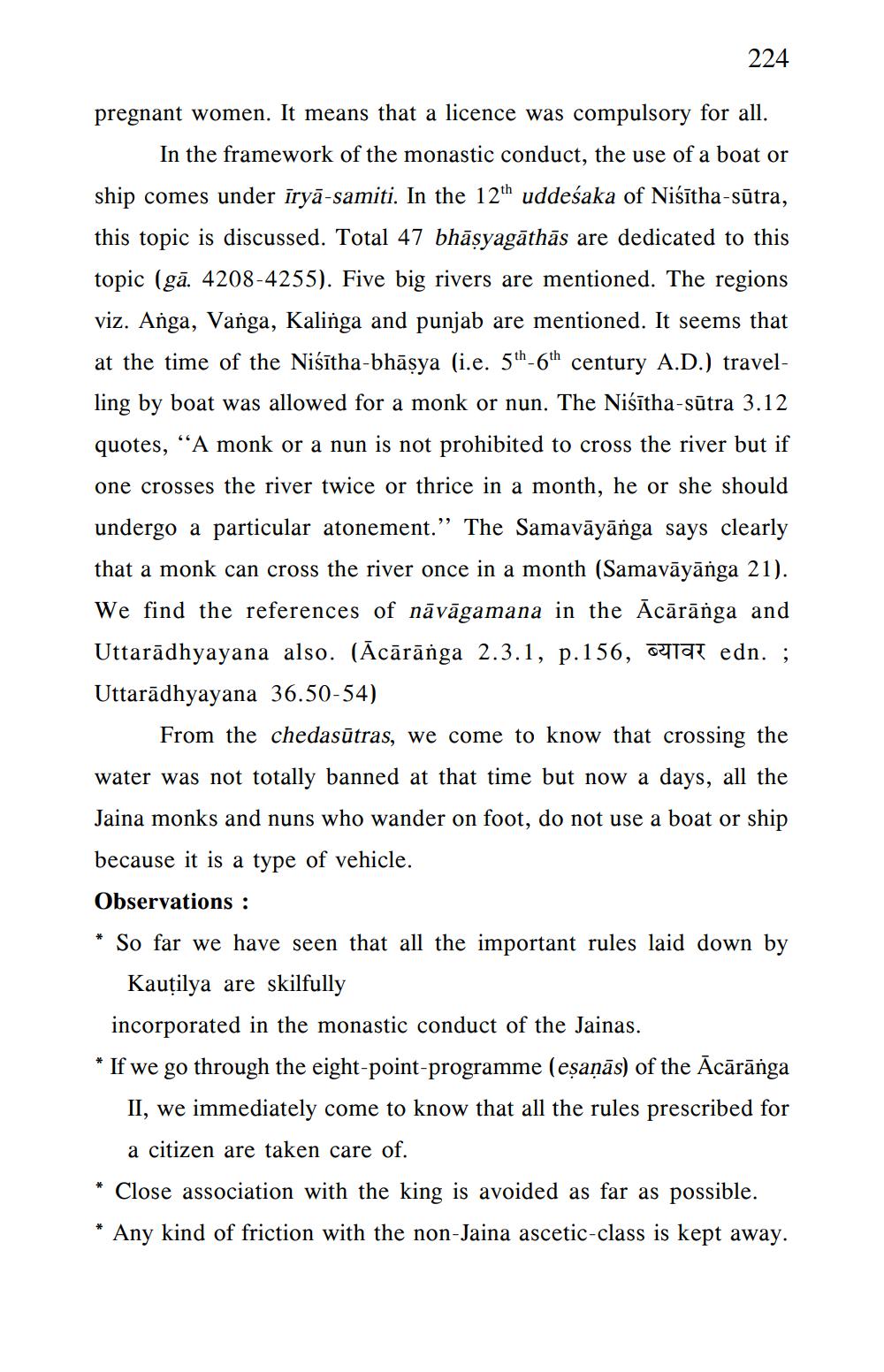________________
224
pregnant women. It means that a licence was compulsory for all.
In the framework of the monastic conduct, the use of a boat or ship comes under īrya-samiti. In the 12th uddeśaka of Niśītha-sūtra, this topic is discussed. Total 47 bhāṣyagāthās are dedicated to this topic (gā. 4208-4255). Five big rivers are mentioned. The regions viz. Anga, Vanga, Kalinga and punjab are mentioned. It seems that at the time of the Niśītha-bhāṣya (i.e. 5th-6th century A.D.) travelling by boat was allowed for a monk or nun. The Niśītha-sūtra 3.12 quotes, "A monk or a nun is not prohibited to cross the river but if one crosses the river twice or thrice in a month, he or she should undergo a particular atonement." The Samavāyānga says clearly that a monk can cross the river once in a month (Samavāyānga 21). We find the references of nāvāgamana in the Acārānga and Uttaradhyayana also. (Ācārānga 2.3.1, p.156, edn. ;
Uttaradhyayana 36.50-54)
From the chedasūtras, we come to know that crossing the water was not totally banned at that time but now a days, all the Jaina monks and nuns who wander on foot, do not use a boat or ship because it is a type of vehicle.
Observations :
So far we have seen that all the important rules laid down by Kautilya are skilfully
incorporated in the monastic conduct of the Jainas.
If we go through the eight-point-programme (eṣaṇās) of the Acārānga II, we immediately come to know that all the rules prescribed for a citizen are taken care of.
* Close association with the king is avoided as far as possible.
* Any kind of friction with the non-Jaina ascetic-class is kept away.




